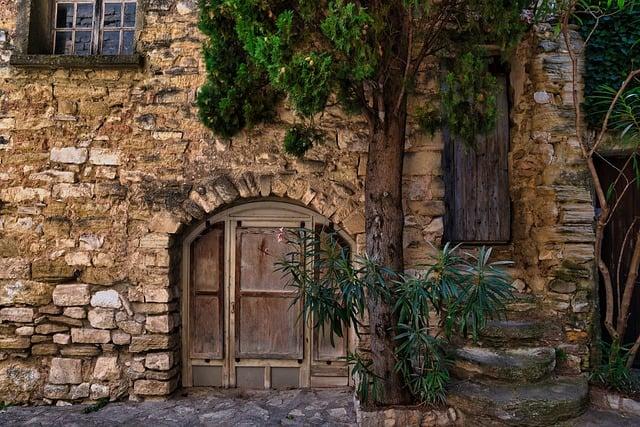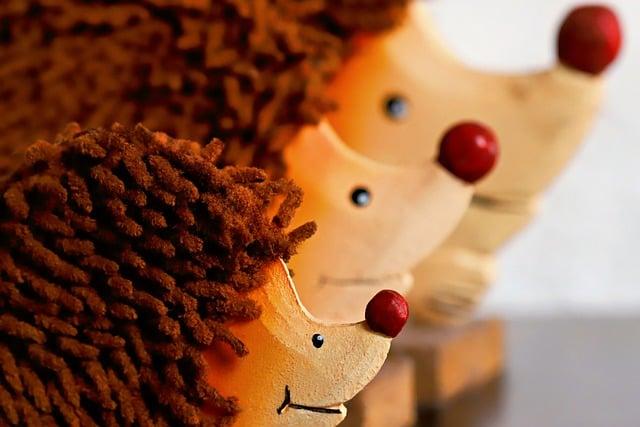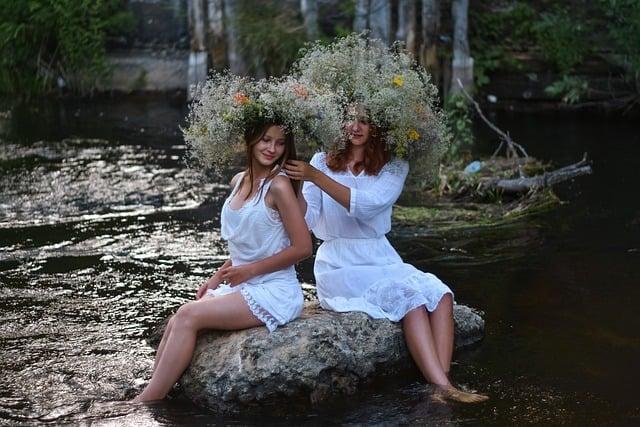In ancient times, a wreath was more than just a decorative circle of leaves and flowers; it was a symbol of victory and honor. Crafted from laurel, olive, or wildflowers, these circular garlands adorned the heads of champions and heroes, celebrating their triumphs in battle or sport. As they paraded through the streets, the wreaths glimmered in the sunlight, a testament to their hard-fought achievements. Over time, the meaning evolved, but the essence of celebration and remembrance remains woven into the very fabric of the wreath’s legacy.
Table of Contents
- Exploring the Historical Significance of Wreaths in Ancient Cultures
- Symbolism and Rituals: The Deeper Meaning Behind Wreaths
- Crafting Tradition: How Wreaths Were Made and Used in the Past
- Modern Interpretations: Reviving the Old Meanings of Wreaths Today
- Q&A

Exploring the Historical Significance of Wreaths in Ancient Cultures
The use of wreaths in ancient cultures transcended mere decoration, embodying profound meanings and symbolisms. In ancient Greece, for instance, wreaths made from laurel leaves were awarded to victors in athletic competitions, signifying not only triumph but also the divine favor of Apollo, the god of sports and arts. These circular garlands represented the cyclical nature of life and victory, serving as a reminder of the fleeting nature of success and the importance of striving for excellence. Similarly, in Rome, wreaths were often crafted from oak leaves, symbolizing strength and endurance, and were used to honor military leaders and celebrate significant achievements.
Beyond the realms of victory and honor, wreaths also held spiritual significance in various ancient traditions. In ancient Egypt, floral wreaths were placed on the heads of the deceased, symbolizing the eternal cycle of life and death, and serving as offerings to the gods for a safe passage to the afterlife. In many indigenous cultures, wreaths made from natural elements were used in rituals to connect with nature and the divine, representing unity and the interconnectedness of all living things. The circular shape of the wreath itself, with no beginning or end, further emphasized themes of eternity and continuity, making it a powerful symbol across different civilizations.

Symbolism and Rituals: The Deeper Meaning Behind Wreaths
Wreaths have long been more than mere decorative items; they are imbued with rich symbolism and serve as powerful rituals in various cultures. Traditionally, these circular arrangements of flowers, leaves, or branches represent the cycle of life, death, and rebirth. The circular shape signifies eternity, with no beginning or end, embodying the idea that life continues in a perpetual cycle. In ancient Rome, wreaths were awarded to victors in athletic competitions, symbolizing achievement and honor, while in Greek culture, they were often associated with the gods, used in religious ceremonies to invoke blessings and protection.
In addition to their historical significance, wreaths play a vital role in contemporary rituals, particularly during seasonal celebrations and memorials. They are often used to convey messages of love, remembrance, and hope. The materials chosen for wreath-making can also carry specific meanings: evergreen branches symbolize everlasting life, while flowers can represent various emotions and sentiments. The act of creating or hanging a wreath can be a meditative practice, allowing individuals to connect with their feelings and intentions, making it a profound ritual that transcends mere decoration.

Crafting Tradition: How Wreaths Were Made and Used in the Past
Wreaths have long been a symbol of celebration and remembrance, intricately woven from nature’s bounty. In ancient times, artisans would gather materials such as **laurel**, **olive branches**, and **wildflowers** to create these circular adornments. Each element held significance; for instance, laurel was associated with victory and honor, while olive branches symbolized peace. The crafting process was often a communal activity, where families and friends would come together, sharing stories and laughter as they intertwined the foliage, creating a tangible representation of their bonds and traditions.
Historically, wreaths were not merely decorative; they served various purposes across cultures. In ancient Rome, they were awarded to victors in athletic competitions, signifying achievement and glory. In the Christian tradition, evergreen wreaths became a symbol of eternal life, particularly during the Advent season. Additionally, they were used in funerary practices, representing the cycle of life and death. The circular shape of the wreath, with no beginning or end, further emphasized the themes of continuity and unity, making it a powerful emblem throughout history.

Modern Interpretations: Reviving the Old Meanings of Wreaths Today
In contemporary society, wreaths have transcended their traditional roles, evolving into symbols that resonate with various cultural and personal meanings. Once primarily associated with victory and honor in ancient civilizations, today’s wreaths are often seen adorning doors and walls, serving as a warm welcome to guests. They are crafted from a myriad of materials, from fresh flowers to dried herbs, each choice reflecting the season or occasion. This revival of wreath-making has sparked a renewed appreciation for their historical significance, allowing individuals to connect with the past while expressing their unique style.
Moreover, the symbolism of wreaths has expanded to encompass themes of **celebration**, **remembrance**, and **unity**. In many cultures, wreaths are used in ceremonies to signify the cyclical nature of life, embodying the idea of rebirth and continuity. As people seek to honor traditions while embracing modern aesthetics, wreaths have become a canvas for creativity, blending old meanings with contemporary designs. This fusion not only enriches the cultural tapestry but also invites individuals to reflect on their personal narratives, making each wreath a story waiting to be told.
Q&A
-
What does the word “wreath” originally mean?
The term ”wreath” comes from the Old English word “writha,” which means “to twist” or “to bind.” It refers to a circular arrangement of flowers, leaves, or stems, symbolizing eternity and the cycle of life.
-
What were wreaths used for in ancient cultures?
In ancient cultures, wreaths were often used as symbols of victory, honor, and celebration. They were commonly awarded to victors in athletic competitions, such as the ancient Olympic Games, and were also used in religious ceremonies.
-
How did the meaning of wreaths evolve over time?
Over time, wreaths transitioned from symbols of victory and honor to representations of love, remembrance, and mourning. Today, they are commonly used in various celebrations, including weddings and holidays, as well as in funerals to honor the deceased.
-
Are there different types of wreaths with specific meanings?
Yes, there are various types of wreaths, each carrying its own significance. For example, a laurel wreath symbolizes victory, while a Christmas wreath represents hospitality and the spirit of the season. Each type can convey different emotions and messages depending on its context.
In exploring the ancient significance of wreaths, we uncover a rich tapestry of symbolism woven through time. From triumph to remembrance, these circular adornments continue to connect us to our past, reminding us of the enduring power of nature and tradition.

大家好,我是彼得潘,專業的手法身體治療師。我喜歡探索和研究各種主題,並透過與人工智慧的合作分享專業、實用、有趣的文章。我們定期進行人工審核,以確保內容的準確性。如果您發現文章中有任何不準確的地方,請隨時與我們聯繫,我們會及時糾正。您可以透過 [email protected] 與我們聯繫。



